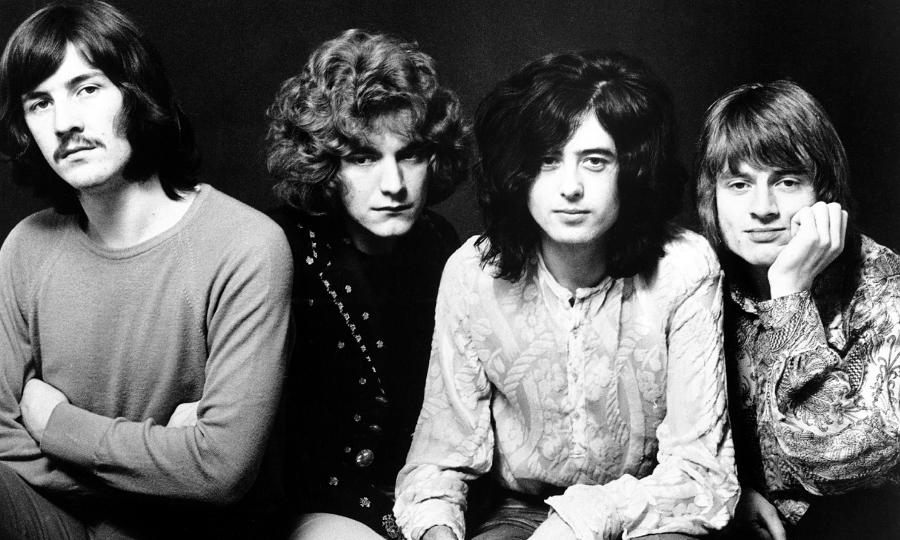On this day, 50 years ago, one of the most magnetic rock albums of all time was born. While their first album was cut in just three weeks, Led Zeppelin II was recorded over six months on tour in London, New York, Vancouver and Los Angeles.
Whereas Jimi Hendrix famously left the master tapes to Are You Experienced in a cab one day, Zeppelin had to carry around their masters in a steamer trunk the whole time they toured.
From the freakout of Whole Lotta Love to the raunchy jam of The Lemon Song, Led Zeppelin created an enduring piece of musical legacy through hard work, innovation and some otherworldly rock alchemy. Today we reflect on why it mattered.
50 years ago to the day Led Zeppelin released a masterpiece. Led Zeppelin II was a landmark album and solidified the bands status as rock deities.
On October 22, 1969 Led Zeppelin released an album steeped in Delta blues, psychedelia and folk-rock. Rising like a phoenix from the ashes of The Yardbirds, Jimmy Page formed Zeppelin and enjoyed unforeseen international success in their first year.
Just four months after the release of their debut album, Atlantic Records were prodding Zeppelin for a follow up. Jimmy Page, Robert Plant, John Paul Jones and John Bonham had really made a mark on America and were quickly becoming Atlantic’s biggest earner since Cream.
“On the second LP, you can really hear the group identity coming together,” said Jimmy Page.
“It was quite insane, really. We had no time and we had to write numbers in hotel rooms. By the time the album came out, I was really fed up with it. I’d just heard it so many times in so many places. I really think I had lost confidence in it.”
Writing an album amidst hectic touring and burgeoning success proved increasingly chaotic. As Led Zeppelin mingled with music industry elites and soaking up the rock and roll lifestyle they were frantically scrambling to record and write.
A studio perfectionist, Page refused to let his standards slide however. While celebrating their first album going gold at a private party at the Plaza Hotel in New York, Jimmy Page sent everyone straight to the studio after they finished to continue recording.
“There was an urgency to being in the States,” Bonham said. “I remember we went out to the airport to meet our wives, got them back to the hotel and then went straight back to the studio and did ‘Bring It on Home.’ We did a lot that year like that.”
“I could see the battle fatigue taking its toll on Jimmy,” road manager Richard Cole said.“His face seemed drawn. The circles under his eyes were getting darker. He started smoking more cigarettes than usual.”
However, Jimmy pulled through. After scrambling together various takes Page flew to New York to meet Hendrix engineer Eddie Kramer. They mixed the LP in just two days at New York’s A&R Studios on a primitive 12-channel Altec board.
“Jimmy was an excellent producer and I think we complemented each other,” Kramer recalls .
Their production masterpiece,Whole Lotta Love. One of the first tracks the band worked on, the riff was inspired by a 15-minute live jam of As Long As I Have You. Their on-stage improvisation was palpable with Plant drawing lyrics from Muddy Waters, as he was wont to do.
Kramer and Page went around twisting every knob they could trying to perfect the terrifying freakout section for Whole Lotta Love. They collected a variety of sounds including: Page’s slide guitar reversed, a ghostly theremin, a napalm bomb explosion and a female orgasm.
The result is a masterful piece of experimental rock music and a high-mark for production technique. However, the outfit weren’t afraid to experiment in various other aspects too.
The stereo mixing of Plant’s howls and Jimmy’s guitar layers ping-ponging from speaker to speaker mimicked a bad acid trip. Bonham played the percussion part to Ramble On on a guitar case, a drum stool or a garbage can – no one recalls which.
Furthermore, Bonham’s incredible Moby Dick solo was patched together from several recordings in separate studios while all the guitar solos were recorded in hallways. It should be noted here that Page had switched to using his famous sunburst 1958 Gibson Les Paul as oppose to the Telecaster he used in early Zeppelin and The Yardbirds.
Moreover, much of it was recorded organically. The Lemon Song was Zeppelin’s version of Howlin Wolf’s Killing Floor and was recorded live in the studio, even down to the natural echoes.
Six months after release Led Zeppelin II had sold three million copies, knocking The Beatles’ Abbey Road out of first place in December. It also set a benchmark for world-class rock and paved the way for Led Zeppelin’s enduring legacy.
Check out the deluxe remastered edition of Led Zeppelin II below:




